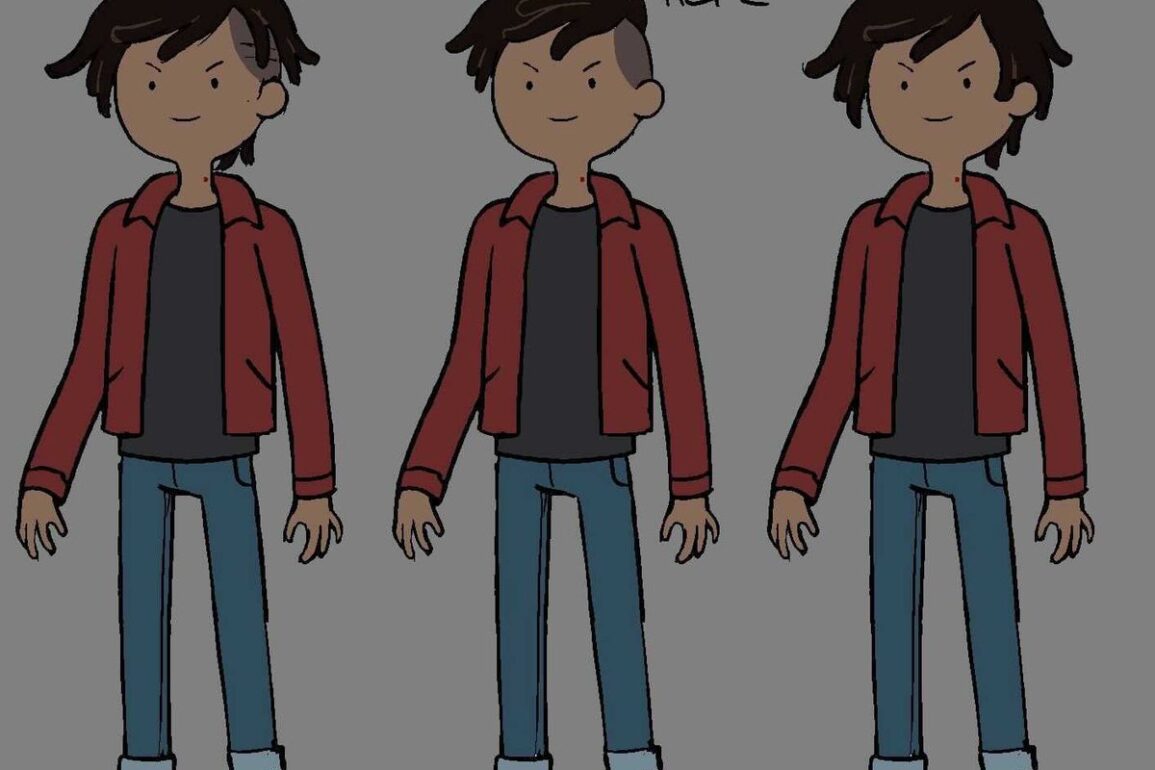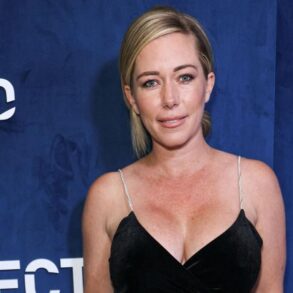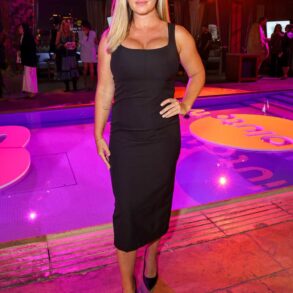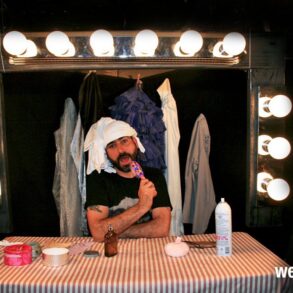In the world of Adventure Time, humanity collapses, elemental beings die and get reborn, and monarchs shape the land into candy wonderlands, but at least one thing stays the same: Marceline the Vampire Queen.
As an immortal being, Marceline is preserved in her world like a fossil contained in the amber of animation. Her original base design pairs her pale purple vampire complexion with a flowing black mane and ax guitar. From her debut design in 2010 to her more recent appearance in the Distant Lands spinoff specials, her look remained largely unaltered besides her outfits and haircuts.
But although she lives in a state of eternal youth, the real world outside her show has continually evolved. Even before Adventure Time ended, the larger animation world began to grapple with what representation could and should look like — Marceline included. In Fionna and Cake, HBO’s spinoff of the Adventure Time universe, the series reintroduces Marshall Lee, the alternate-universe counterpart to Marceline, with a revised design.
In his original appearance in Adventure Time, Marshall Lee maintained the core traits of Marceline. He was also a vampire and shared the look of gray vampire skin. Although the series established Marceline had a Black or brown mom, fans had yet to see either vampire shown with melanated skin.
But Fionna and Cake debuted Marshall Lee as a Black character — the first time fans saw either depiction of the vampire as visibly Black in the Adventure Time universe. Fans celebrated the new design on social media by reacting to the first trailer of the show and sharing cosplay. To Adam Muto, executive producer on both Adventure Time and Fionna and Cake, “it would have felt harder to rationalize not showing [Marshall Lee] that way.”

Image: Danny Cragg/Warner Media
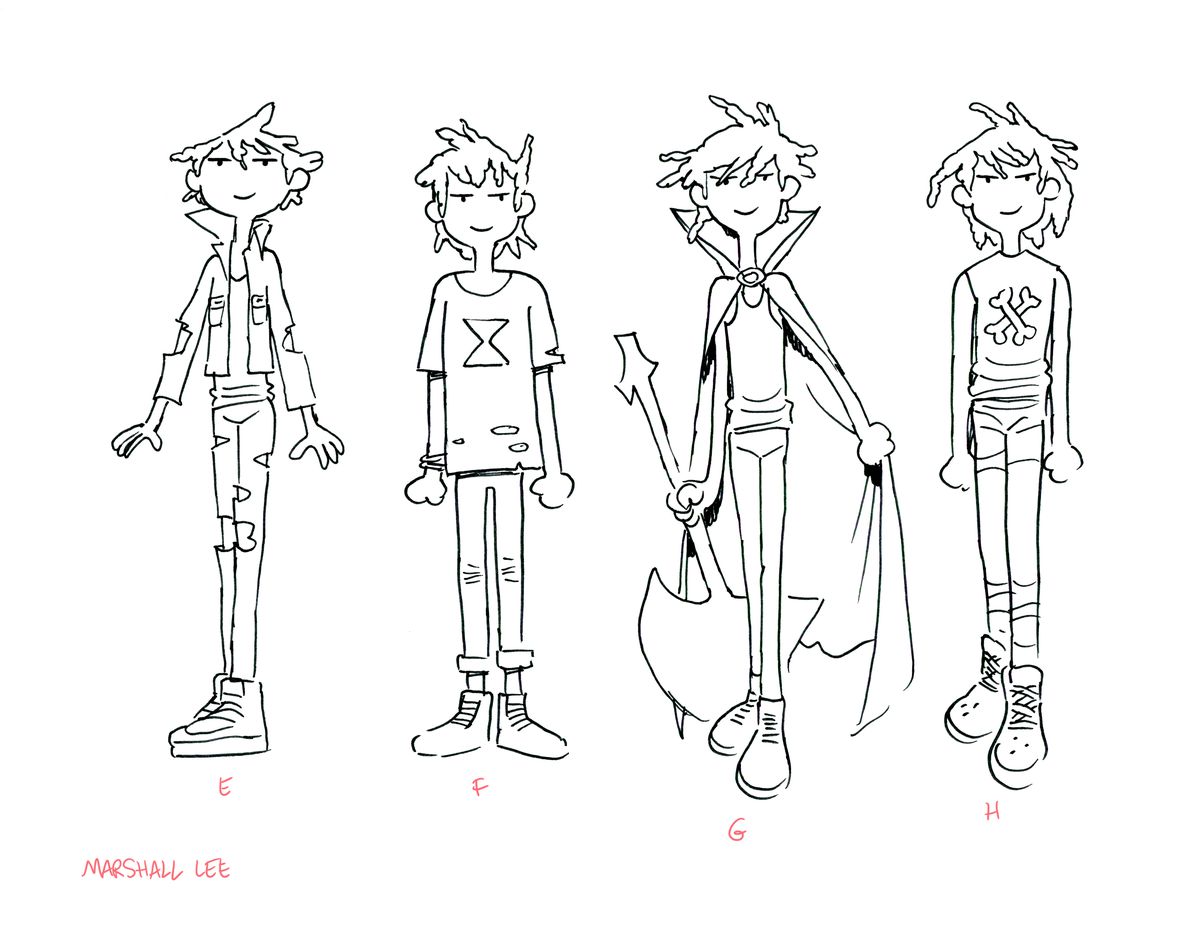



Image: Tom Herpich/Warner Media
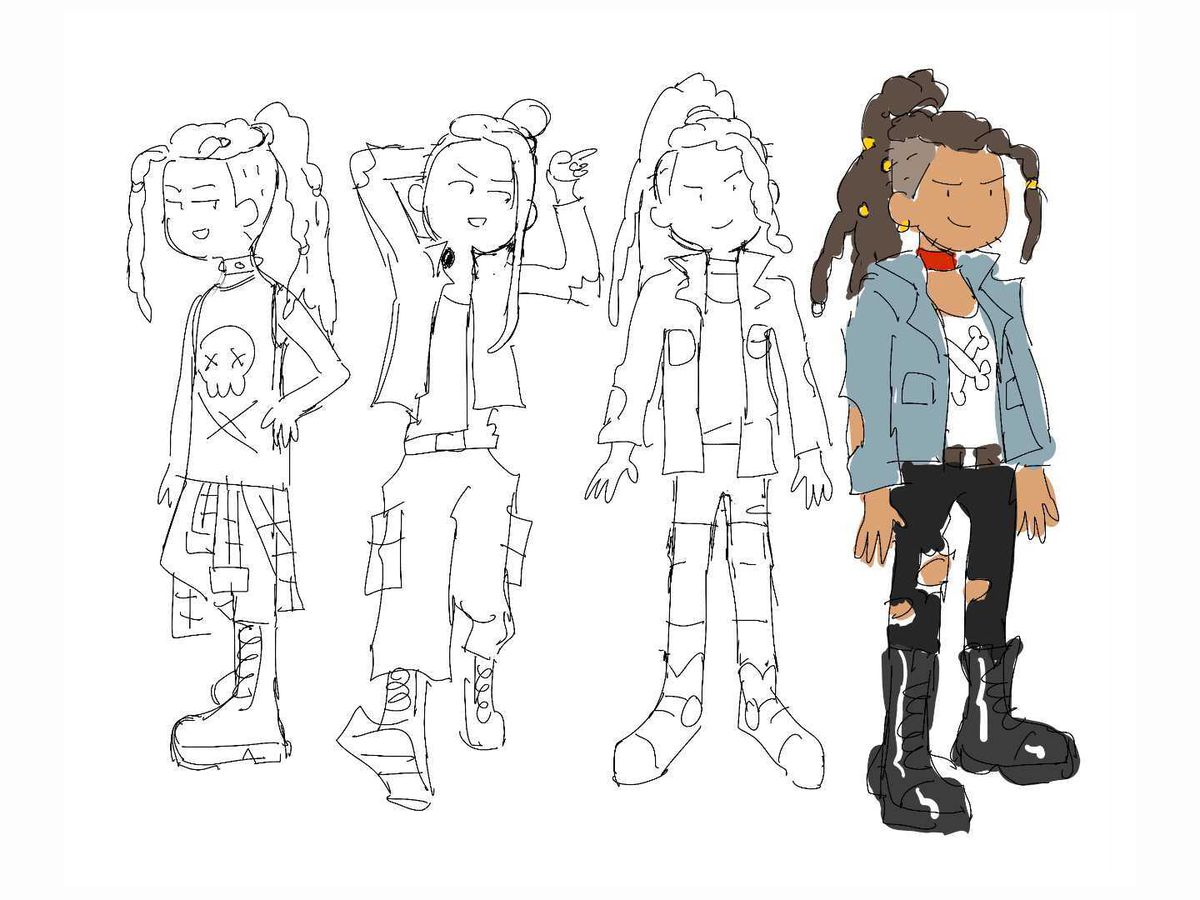



Image: Haewon Lee/Warner Media
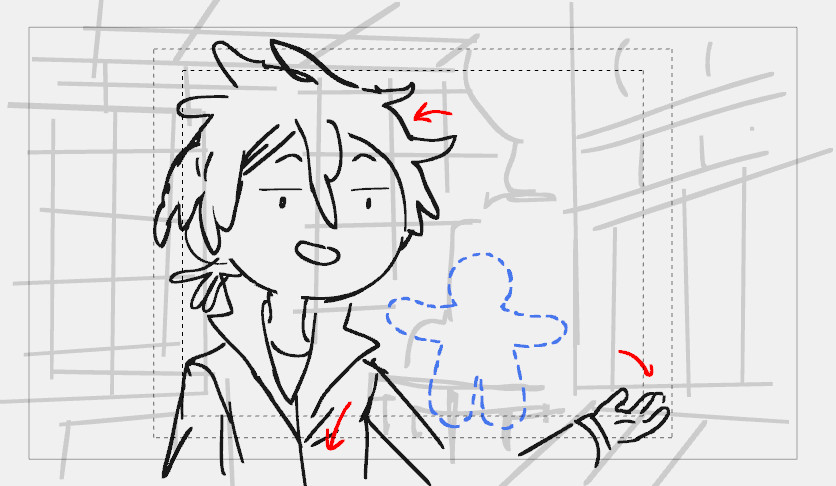



Image: Iggy Craig/Warner Media
It’s both a large change and it’s not.
In an email interview, Muto told Polygon the team did a couple of passes for Marshall Lee’s design. He said the team used artist Natasha Allegri’s original designs as a starting point, and then incorporated concept art from Tom Herpich and other artists.
“We knew this version would have none of the supernatural elements of the previous version. He’s kind of a punk but with a rich upbringing from which he’s trying to distance himself,” he said. “In retrospect, we probably could have added more details and piercings but that’s added line mileage and things to track and he’s moving around a lot in these episodes.”
Although Marshall Lee started as a character in Ice King’s in-universe fanfiction, there was a lot riding on his presence in Fionna and Cake. Fans loved and celebrated Marceline for the way she brought queer representation to a children’s show, but her design long stood as a point of contention.
Some fans long questioned if she was actually Black or not. While she changed outfits, showrunners consistently portrayed her with the pale appearance associated with white, Eurocentric portrayals of vampires. In an episode titled “Marceline the Vampire Queen,” Princess Bubblegum cures Marceline of her vampirism and turns her back into a normal human. While she loses her vampire powers, the human version of Marceline still has very light skin and her look stays the same — save for the disappearance of two fang marks on her neck.
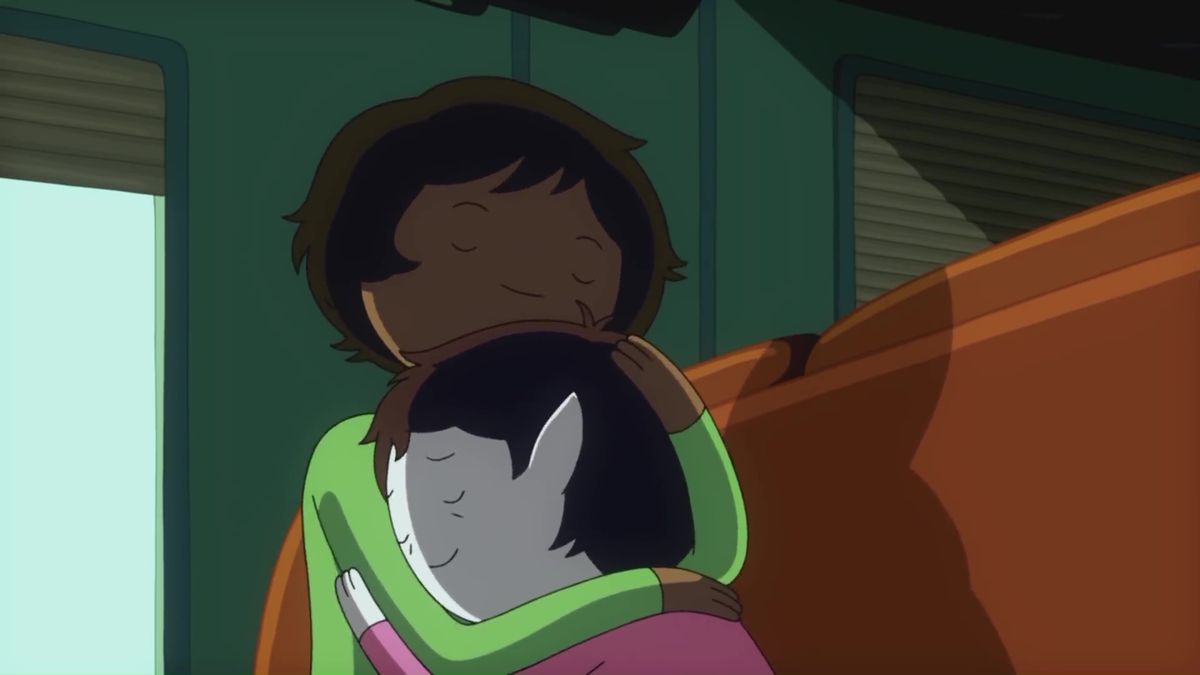



Image: Cartoon Network
Showrunners eventually established that Marceline was a character of color, but there were no labels used to define her in the show. In “Everything Stays,” we saw Marceline had a Black or brown mom, but fans couldn’t agree on what that meant. Some fans refused to acknowledge Marceline as a person of color, and posts on Tumblr would occasionally circulate reminding people what was canon. Even with all that discussion in the fan community, Muto says Marshall Lee’s identity was clear to the creative staff “early in the process” of developing Fionna and Cake.
“We didn’t have a final model before we boarded the first episode. We had already established that Marceline’s mom (played by the amazing Erica Luttrell) was Black during Season 7 and it felt natural to depict [Marshall Lee] that way, especially since he was neither a demon nor a Vampire in Fionna’s world. To me, it would have felt harder to rationalize not showing him that way.”
Muto’s comment points to yet another piece in the overall conversation around representation in animation that has changed in the past few years: casting. Fan chatter interpreting the characters often widely ignored that Marceline is played by Olivia Olson, who is of Afro-Jamaican descent.
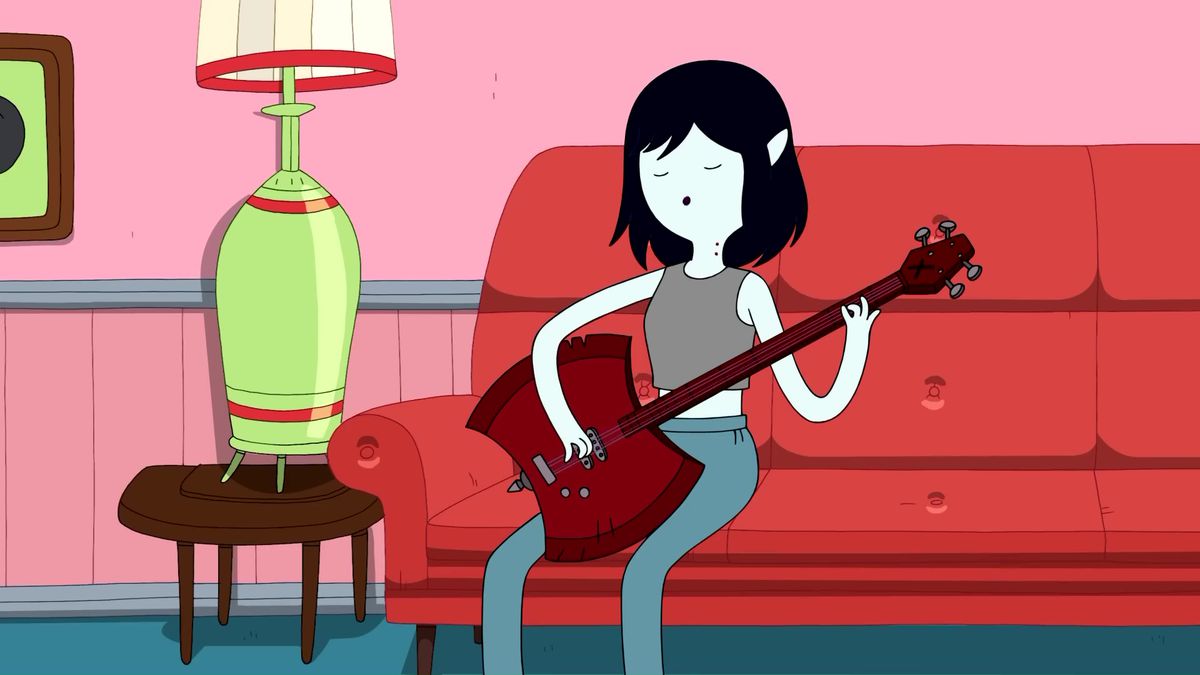



Image: Cartoon Network
The relationship between voice actors and the ethnicities of the characters they portray is a regular discussion in the world of animation. In the summer of 2020, Alison Brie said she regretted playing a Vietnamese American character on Netflix’s BoJack Horseman, and the show’s creator grappled with casting the show with all white actors. Around the same time, Jenny Slate announced that she would no longer voice a biracial character on Big Mouth and Kristen Bell exited Central Park for the same reason. Polygon asked if — and how — these larger conversations shaped how the team approached creating Fionna and Cake.
The portrayal of characters was discussed among the Adventure Time team too. “Marceline didn’t change too much from her look in the latter episodes of the series since Vampires are ageless,” Muto told Polygon. But that doesn’t mean they didn’t consider her a Black character during Adventure Time’s original run. “This is years back now but I remember talking about it internally now and then. The actor playing Marceline, Olivia Olson, is multiracial so when discussions came up about depicting her human side in season 7, it seemed like a natural choice,” he said.
Polygon asked if — and how — these larger conversations shaped how the team approached creating Fionna and Cake, in which Donald Glover voices Marshall Lee.
“We have looked at the voice cast over time and looked at ways to get representation that better reflects the world we live in. A writer on the show, Kate Tsang, has worked in casting before so she was able to offer advice on how to write character descriptions to get more specificity, and breadth, in some of the casting calls,” he said.
From the outside, the change to Marshall Lee appears to be welcome. Fans have flocked to TikTok to share edits and celebrate both Marshall Lee and his budding romance with Gary Prince. Muto seemed heartened by the response, having received no pushback about the design during development.
“I don’t remember getting any network notes along those lines. In terms of depiction, we did stop to consider what characteristics could ring differently if you take a fantasy character in a fantasy world and now show them as a Black musician in a more realistic world. If the question is more about audience reception, animation works so far in advance, usually without preview materials, that we’re not really in a dialog with the viewers in the same [way] as some other media.”
Vampires can be Black, and Black vampires regularly appear in media, such as Laurent in Twilight or AMC’s more recent adaptation of Interview with the Vampire. Yet Marceline herself hasn’t gone through any changes that depict her with darker skin. Fionna and Cake explores alternate universes, with alternate forms of Marceline, but she’s still portrayed with light skin in each one. To this end, fans have always been around to fill in the cracks and create the Marceline they want to see through fan art and cosplay.
Marshall Lee’s new design represents just one way that Adventure Time grew over the years. Throughout the course of the series, Princess Bubblegum went from being an overly controlling monarch to a girl who learns to accept the flaws of those around her. Fionna and Cake deepened its commitment to telling queer stories and explored the romance shared between Princess Bubblegum and Marceline throughout several universes. According to Muto, these changes came naturally with the development of both shows.
“A lot of them evolved over time and just felt organic. For example, the more empathetic Ice King became, the less we wanted to show him chasing women or getting pummeled. To try to push against that felt less grounded.”
The way showrunners have approached change in the show neatly folds into the story of Marceline herself.
In the Land of Ooo, Marceline lives as an immortal vampire who does not age. Over the course of her 1,000-year-long life, she sees friends come, go, and die. She witnesses dramatic periods of history like the downfall and eventual return of humanity itself, and yet she stays the same — at least, from the outside. In these moments of loneliness, she turns to music.
In a flashback episode from her infant years, Marceline croons a song from her childhood. Written by Rebecca Sugar, the song goes, “Everything stays right where you left it / Everything stays / But it still changes / Ever so slightly, daily and nightly / In little ways, when everything stays.” Marshall Lee is just another way the show has stayed the same, but still changed, ever so slightly, for the better.




